|

On eBay Now...
1939 SPORTING MEN HUNTER MOOSE CALL REA IRVIN ARTIST NEW YORKER COVER FC1948 For Sale
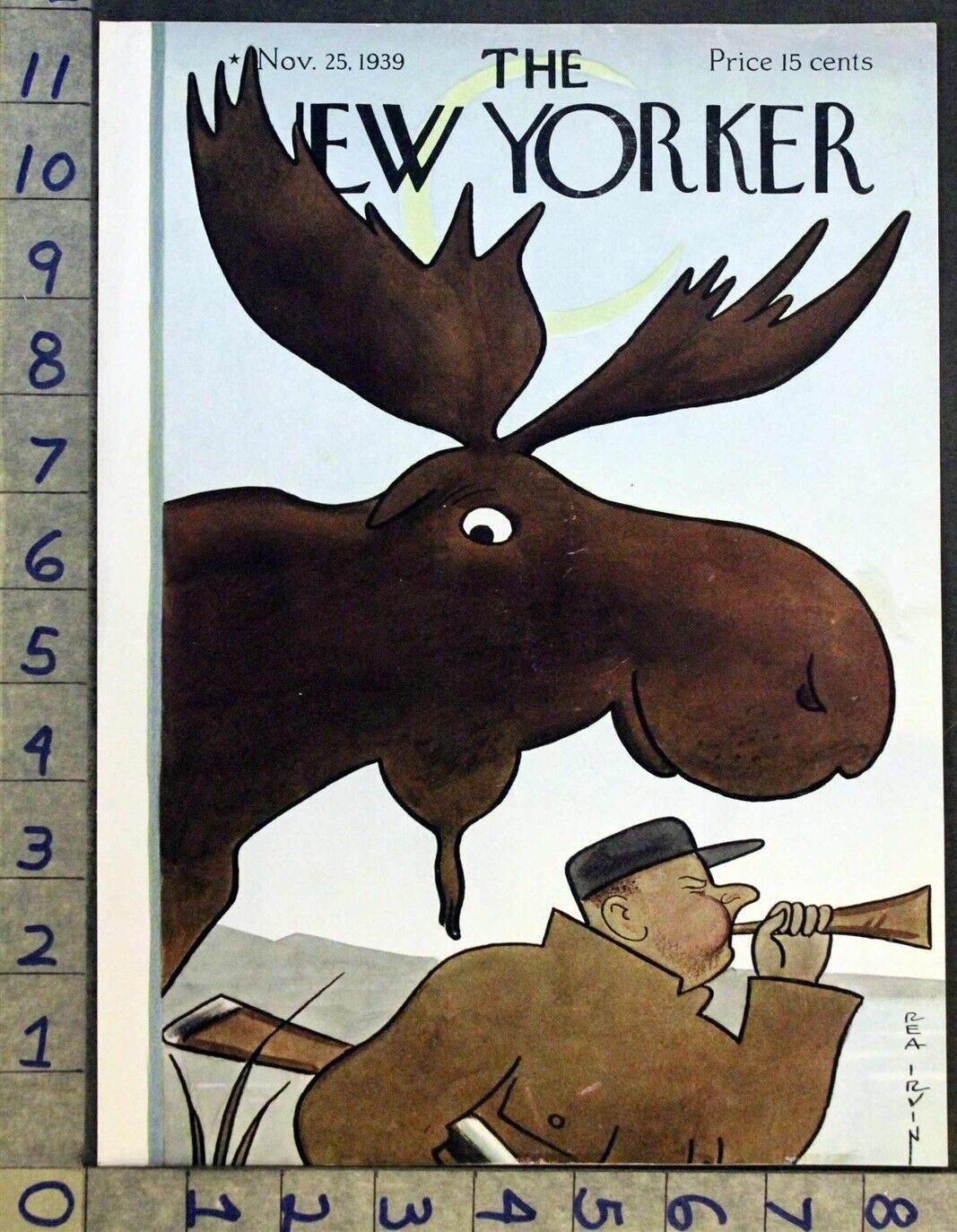
When you click on links to various merchants on this site and make a purchase, this can result in this site earning a commission. Affiliate programs and affiliations include, but are not limited to, the eBay Partner Network.

1939 SPORTING MEN HUNTER MOOSE CALL REA IRVIN ARTIST NEW YORKER COVER FC1948 :
$48.95
1939 SPORTING MEN HUNTER MOOSE CALL REA IRVIN ARTIST NEW YORKER COVER FC1948 DATE OF THIS**ORIGINAL** ITEM:1939
ILLUSTRATOR/ARTIST: Rea Irvin(August 26, 1881 – May 28, 1972) was an American graphic artist. Although never formally credited as such, he servedde factoas the first art editor ofThe New Yorker. He created theEustace Tilleycover portrait and theNew Yorkertypeface. He first drew Tilley for the cover of the magazine's first issue on February 21, 1925. Tilley appeared annually on the magazine's cover every February until 1994.As one commentator has written, "a truly modern bon vivant, Irvin was also a keen appreciator of the century of his birth. His high regard for both the careful artistry of the past and the gleam of the modern metropolis shines from the very first issue of the magazine ..." Born inSan Francisco, he studied at theMark Hopkins Art Institutefor six months, started his career as an unpaid cartoonist forThe San Francisco Examiner.The Honolulu Advertiserwas among the other newspapers art departments that he served in.He also contributed to theSan Francisco Evening Post. He also worked as an itinerant actor (for both stage and screen), newspaper illustrator, and piano player.In 1906 he moved to theEast Coast. In the 1910s he contributed many illustrations to bothRed Bookmagazine and its sister publication,Green Book. BeforeWorld War I, Irvin contributed illustrations regularly toLife, and rose to the position of art editor. (Lifethe humorous weekly, and not to be confused with the more famous magazine of the same name published byHenry Luce). Irvin also contributed toCosmopolitanwhen it was a serious literary publication. He illustratedWallace Irwin's"Letters of a Japanese Schoolboy" inLife.He would later incorporateJapaneseimagery in satiricalkakemonoforThe New Yorker. He also created a series of humorousadvertisementsforMurad(turkish tobaccocigarettes). He also contributed the illustrations for "Snoot If You Must," byLucius Beebe, a noted raconteur of New York's cafe society (1943, D. Appleton-Century). He was fired from his position as art editor atLifein 1924. However, Irvin had joined an advisory board to help launchThe New Yorkerand then worked on the magazine's staff as an illustrator and art editor. When he had first taken the job, Irvin had assumed that the magazine would fold after a few issues,but his work would ultimately appear on the cover of 169 issues ofThe New Yorkerbetween 1925 and 1958. The magazine's first cover, of adandypeering at abutterflythrough amonocle, was drawn by Irvin; the dandy replaced at the last minute a drawing of theater curtains revealing the skyline ofManhattan.The gentleman on the original cover is referred to as "Eustace Tilley," a character created forThe New YorkerbyCorey Ford. Another example is the piece known asThe Unity of the Allied Nations, which appeared on the cover of the July 1, 1944 issue, and depicts thenational personificationsof theAllies(the American Eagle, the Chinese Dragon, theRussian Bearand the British Lion). Besides covers for the magazine, Irvin also drew various illustrations, department headings, caricatures, and cartoons. The New Yorkersignature display typeface, used for its nameplate and headlines and the masthead aboveThe Talk of the Townsection, is called "Irvin" or "Irvin type," after him.Analphabetdrawn by the American etcher Allen Lewis, who had received training inwoodcuttinginParis, was used as the typographical basis for the "Irvin type."Irvin may have spotted Lewis' lettering, which was drawn to imitate a woodcut, in a pamphlet entitled "Journeys To Bagdad", and liked it so much that Irvin asked Lewis to create the entire alphabet. Uninterested in this project, Lewis suggested that Irvin create the alphabet himself –this became the "Irvin type."
SPECIAL CHARACTERISTICS/DESCRIPTIVE WORDS: The New Yorker(stylized inall caps) is an American magazine featuringjournalism, commentary, criticism, essays, fiction,satire, cartoons, and poetry. Founded as a weekly in 1925, the magazine is published 47 times annually, with five of these issues covering two-week spans. Although its reviews and events listings often focus on thecultural life of New York City,The New Yorkeralso produceslong-form journalismand shorter articles and commentary on a variety of topics, has a wide audience outside New York, and is read internationally. It is well known for its illustrated and often topical covers,its commentaries onpopular cultureand eccentricAmerican culture, its attention to modernfictionby the inclusion ofshort storiesand literaryreviews, its rigorousfact checkingandcopy editing,itsjournalismon politics andsocial issues, and its single-panelcartoonssprinkled throughout each issue. The New Yorkerwas founded byHarold Ross(1892–1951) and his wifeJane Grant(1892–1972), aNew York Timesreporter, and debuted on February 21, 1925. Ross wanted to create a sophisticated humor magazine that would be different from perceivably "corny" humor publications such asJudge, where he had worked, or the oldLife. Ross partnered with entrepreneur Raoul H. Fleischmann (who founded the General Baking Company)to establish the F-R Publishing Company. The magazine's first offices were at 25 West 45th Street inManhattan. Ross edited the magazine until his death in 1951. During the early, occasionally precarious years of its existence, the magazine prided itself on its cosmopolitan sophistication. Ross declared in a 1925 prospectus for the magazine: "It has announced that it is not edited for the old lady inDubuque." Although the magazine never lost its touches of humor, it soon established itself as a preeminent forum for seriousfiction,essaysand journalism. Shortly after the end ofWorld War II,John Hersey's essayHiroshimafilled an entire issue. The magazine has published short stories by many of the most respected writers of the 20th and 21st centuries, includingAnn Beattie,Sally Benson,Maeve Brennan,Truman Capote,Rachel Carson,John Cheever,Roald Dahl,Mavis Gallant,Geoffrey Hellman,Ernest Hemingway,Stephen King,Ruth McKenney,John McNulty,Joseph Mitchell,Alice Munro,Haruki Murakami,Vladimir Nabokov,John O'Hara,Dorothy Parker,S.J. Perelman,Philip Roth,George Saunders,J. D. Salinger,Irwin Shaw,James Thurber,John Updike,Eudora Welty, andE. B. White. Publication ofShirley Jackson's "The Lottery" drew more mail than any other story in the magazine's history.In its early decades, the magazine sometimes published two or even three short stories in an issue, but in later years the pace has remained steady at one story per issue. The nonfiction feature articles (usually the bulk of an issue) cover an eclectic array of topics. Subjects have included eccentric evangelistCreflo Dollar, the different ways in which humans perceive the passage of time, andMünchausen syndrome by proxy. The magazine is known for its editorial traditions. Under the rubricProfiles, it has published articles about prominent people such asErnest Hemingway,Henry R. LuceandMarlon Brando, Hollywood restaurateurMichael Romanoff, magicianRicky Jay, and mathematiciansDavid and Gregory Chudnovsky. Other enduring features have been "Goings on About Town", a listing of cultural and entertainment events in New York, and "The Talk of the Town", afeuilletonor miscellany of brief pieces—frequently humorous, whimsical, or eccentric vignettes of life in New York—in a breezily light style, although latterly the section often begins with a serious commentary. For many years, newspaper snippets containing amusing errors, unintended meanings or badly mixed metaphors ("Block That Metaphor") have been used as filler items, accompanied by a witty retort. There is no masthead listing the editors and staff. Despite some changes, the magazine has kept much of its traditional appearance over the decades in typography, layout, covers and artwork. The magazine was acquired byAdvance Publications, the media company owned bySamuel Irving Newhouse Jr, in 1985,for $200million when it was earning less than $6million a year. Ross was succeeded as editor byWilliam Shawn(1951–87), followed byRobert Gottlieb(1987–92) andTina Brown(1992–98). The current editor ofThe New YorkerisDavid Remnick, who succeeded Brown in July 1998. Among the important nonfiction authors who began writing for the magazine during Shawn's editorship wereDwight Macdonald,Kenneth Tynan, andHannah Arendt, whoseEichmann in Jerusalemreportage appeared in the magazine,before it was published as a book. Brown's tenure attracted more controversy than Gottlieb's or even Shawn's, thanks to her high profile (Shawn, by contrast, had been an extremely shy, introverted figure), and to the changes she made to a magazine with a similar look for the previous half-century. She introduced color to the editorial pages (several years beforeThe New York Times) and included photography, with less type on each page and a generally more modern layout. More substantively, she increased the coverage of current events and topics such as celebrities and business tycoons, and placed short pieces throughout "Goings on About Town", including a racy column about nightlife in Manhattan. A letters-to-the-editor page was introduced, and authors' bylines were added to their "Talk of the Town" pieces. Since the late 1990s,The New Yorkerhas used the Internet to publish current and archived material, and maintains a website with some content from the current issue (plus exclusive web-only content). Subscribers have access to the full current issue online and a complete archive of back issues viewable as they were originally printed. In addition,The New Yorker's cartoons are available for purchase online. A digital archive of back issues from 1925 to April 2008 (representing more than 4,000 issues and half a million pages) was also issued on DVD-ROMs and on a small portable hard drive. More recently, an iPad version of the current issue has been released. In 2014,The New Yorkeropened up access online to all of its archives, expanded its plans to run an ambitious Website, and launched a paywalled subscription model. “What we’re trying to do,” saidNicholas Thompson, the editor of the Website, “is to make a website that is to the Internet what the magazine is to all other magazines.” The magazine's editorial staff unionized in 2018 andThe New Yorker Unionsigned its firstcollective bargaining agreementin 2021. The New Yorkerinfluenced a number of similar magazines, includingThe Brooklynite(1926 to 1930),The Chicagoan(1926 to 1935), and Paris'sThe Boulevardier(1927 to 1932). Cartoons - COMIC ARTThe New Yorkerhas featured cartoons (usuallygag cartoons) since it began publication in 1925. For years, its cartoon editor wasLee Lorenz, who first began cartooning in 1956 and became aNew Yorkercontract contributor in 1958.After serving as the magazine's art editor from 1973 to 1993 (when he was replaced byFrançoise Mouly), he continued in the position of cartoon editor until 1998. His bookThe Art of the New Yorker: 1925–1995(Knopf, 1995) was the first comprehensive survey of all aspects of the magazine's graphics. In 1998,Robert Mankofftook over as cartoon editor and edited at least 14 collections ofNew Yorkercartoons. Mankoff also usually contributed a short article to each book, describing some aspect of the cartooning process or the methods used to select cartoons for the magazine. He left the magazine in 2017. The New Yorker's stable of cartoonists has included many important talents in American humor, includingCharles Addams,Peter Arno,Charles Barsotti,George Booth,Roz Chast,Tom Cheney,Sam Cobean,Leo Cullum,Richard Decker,Pia Guerra,J. B. Handelsman,Helen E. Hokinson,Pete Holmes,Ed Koren,Reginald Marsh,Mary Petty,George Price,Charles Saxon,Burr Shafer,Otto Soglow,William Steig,Saul Steinberg,James Stevenson,James Thurber, andGahan Wilson. Many earlyNew Yorkercartoonists did not caption their cartoons. In his bookThe Years with Ross, Thurber describes the newspaper's weekly art meeting, where cartoons submitted over the previous week were brought up from the mail room to be looked over by Ross, the editorial department, and a number of staff writers. Cartoons were often rejected or sent back to artists with requested amendments, while others were accepted and captions were written for them. Some artists hired their own writers; Helen Hokinson hired James Reid Parker in 1931.Brendan Gillrelates in his bookHere at The New Yorkerthat at one point in the early 1940s, the quality of the artwork submitted to the magazine seemed to improve. It later was found out that the office boy (a teenagedTruman Capote) had been acting as a volunteer art editor, dropping pieces he did not like down the far end of his desk. Several of the magazine's cartoons have reached a higher plateau of fame. One 1928 cartoon drawn byCarl Roseand captioned byE.B. Whiteshows a mother telling her daughter, "It's broccoli, dear." The daughter responds, "I say it's spinach and I say the hell with it." The phrase "I say it's spinach" entered the vernacular, and three years later, the Broadway musicalFace the MusicincludedIrving Berlin's song "I Say It's Spinach (And the Hell with It)".Thecatchphrase"back to the drawing board" originated with the 1941 Peter Arno cartoon showing an engineer walking away from a crashed plane, saying, "Well, back to the old drawing board." The most reprinted isPeter Steiner's 1993 drawing of two dogs at a computer, with one saying, "On the Internet, nobody knows you're a dog". According to Mankoff, Steiner and the magazine have split more than $100,000 in fees paid for the licensing and reprinting of this single cartoon, with more than half going to Steiner. Over seven decades, many hardcover compilations ofNew Yorkercartoons have been published, and in 2004, Mankoff editedThe Complete Cartoons of The New Yorker, a 656-page collection with 2,004 of the magazine's best cartoons published during 80 years, plus a double CD set with all 68,647 cartoons ever published in the magazine. This features a search function allowing readers to search for cartoons by cartoonist's name or year of publication. The newer group of cartoonists in recent years includesPat Byrnes,J. C. Duffy,Liana Finck,Emily Flake,Robert Leighton,Michael Maslin,Julia Suits, andP. C. Vey. Will McPhail cited his beginnings as "just ripping offCalvin and Hobbes, Bill Watterson, and doing little dot eyes."The notion that someNew Yorkercartoons have punchlines so oblique as to be impenetrable became a subplot in theSeinfeldepisode "The Cartoon",as well as a playful jab inThe Simpsonsepisode "The Sweetest Apu". In April 2005, the magazine began using the last page of each issue for "The New Yorker CartoonCaption Contest". Captionless cartoons byThe New Yorker's regular cartoonists are printed each week. Captions are submitted by readers, and three are chosen as finalists. Readers then vote on the winner. Anyone age 13 or older can enter or vote. Each contest winner receives a print of the cartoon (with the winning caption) signed by the artist who drew the cartoon.In 2017, afterBob Mankoffleft the magazine,Emma Allenbecame the youngest and first female cartoon editor in the magazine's history.
ADVERTSIZE:SEE RULER SIDES IN PHOTO FOR DIMENSIONS ( ALL DIMENSIONS IN INCHES) **For multiple purchases please ASK FOR + wait forour combined invoice.Shipping discountareONLYavailable with this method. Thank You.
At BRANCHWATER BOOKS we look for rare & unusual ADVERTISING, COVERS + PRINTS of commercial graphics from throughout the world. Our AD's and COVER'Sare ORIGINAL and 100% guaranteed --- (we code all our items to insure authenticity) ---- we stand behind this.
As graphic collectors ourselves, we take great pride in doing the best job we can to preserve and extend the wonderful historic graphics of the past. PLEASE LOOK AT OUR PHOTO CLOSELY ASIT IS (ALBEIT LOWER RESOLUTION) THE PRODUCT BEING SOLD.....NOT STOCK IMAGES
**NOTE** : PAGES MAY SHOW AGE WEAR AND IMPERFECTIONS TO MARGINS, WITH CLOSED NICKS AND CUTS, WHICH DO NOT AFFECT AD IMAGE OR TEXT WHEN MATTED AND FRAMED. SOMETIMES THE PAGES HAVE BEEN TRIMMED.. PLEASE NOTE THE ACTUAL SIZE OF SELLING AD IN THE ATTACHED PHOTO IMAGE... WHAT YOU SEE IS WHAT YOU GET... Weship viaUnited States Postal Service.We have a3 day handling time not including weekends or holidays but normally we have all orders processed, packed and shipped within 48 hrs.
A Note to our international buyers (Including Canada). Please read before placing a offer or buying an item: **Import taxes, duties and charges are not included in the item price or shipping charges. These charges are the buyer's responsibility. Please check with your country's customs office to determine what these additional costs will be prior to offerding/buying on items. These charges are normally collected by the shipping company or when you pick the item up,this is not anadditionalshipping charge. We are not responsible for shipping times to international buyer's. Your country's customs may hold the package for a month or more. **We pride ourselves on quality products, great service, accurate gradationsand fast shipping.** BRANCHWATER BOOKS
YOUR AD WILL BE SHIPPED ROLLED IN APROTECTIVE PLASTIC BAG INAN 80mm (TWICE USPSRECOMMENDED) THICK, 2 INCHESIN DIAMETER (SO AS NOT TO STRESS THE PAPER)SHIPPING TUBE WITH PRESS TIGHT PLASTIC END CAPS.
FC1948
Powered by SixBit's eCommerce Solution


1930-1939 NEW YORK TIMES SUNDAY SPORTS SECTIONS LOT OF 150+ ISSUES - NTL 16K $105.00
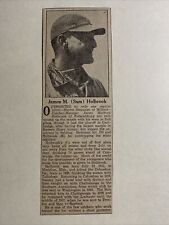
Sammy Holbrook Federalsburg A’s Maryland 1939 Sporting News Baseball 2X7 Panel $16.00
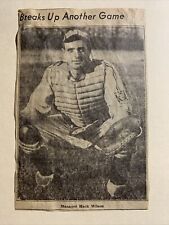
William Hack Wilson Topeka Owls 1939 Sporting News Baseball 4X6 Panel $16.00
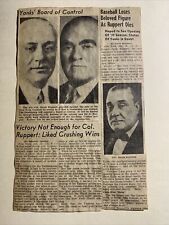
Jacob Ruppert Dies New York Yankees 1939 Sporting News Baseball 6X10 Panel $16.00
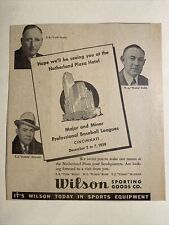
Wilson Sports & Netherland Plaza Hotel 1939 Sporting News Baseball 7X8 Ad $16.00
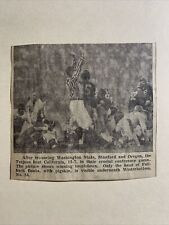
USC Jack Banta California Bud Winterbottom 1939 Sporting News Football 4X4 Panel $16.00
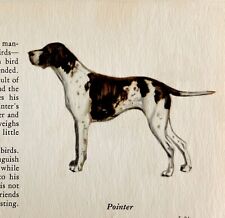
Pointer 1939 Sporting Dog Breed Art Ole Larsen Color Plate Print Antique PCBG18 $17.99
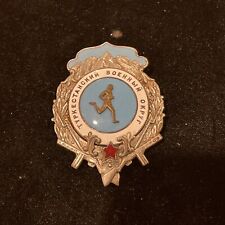
USSR.EARLY SOVIET SPORTING BREAST BADGE OF TURKESTAN MILITARY DISTRICT,70 X 50mm $250.00
|